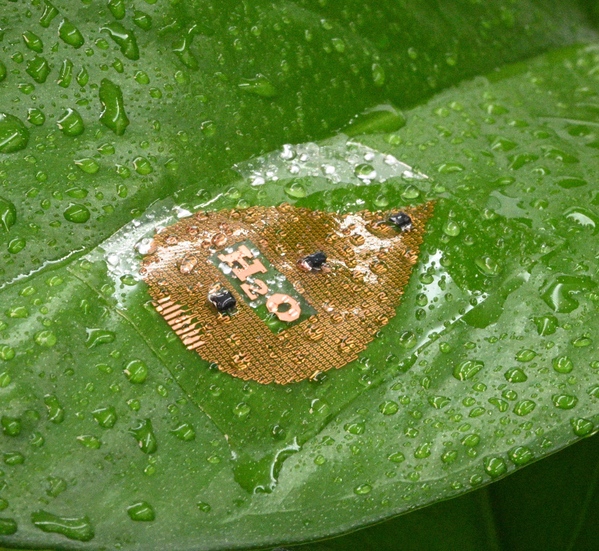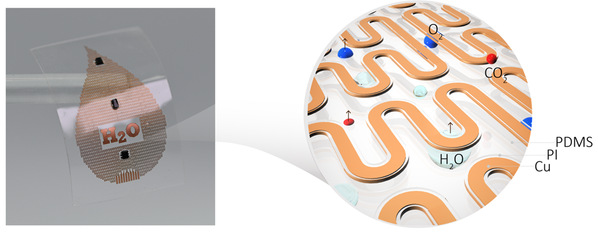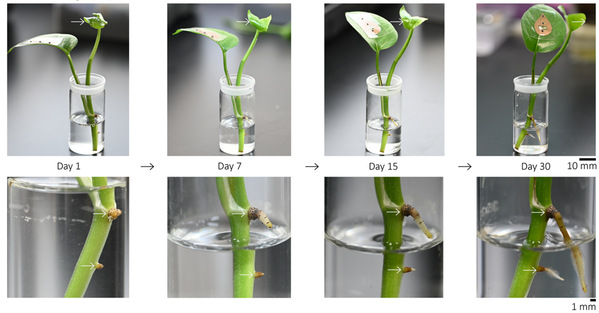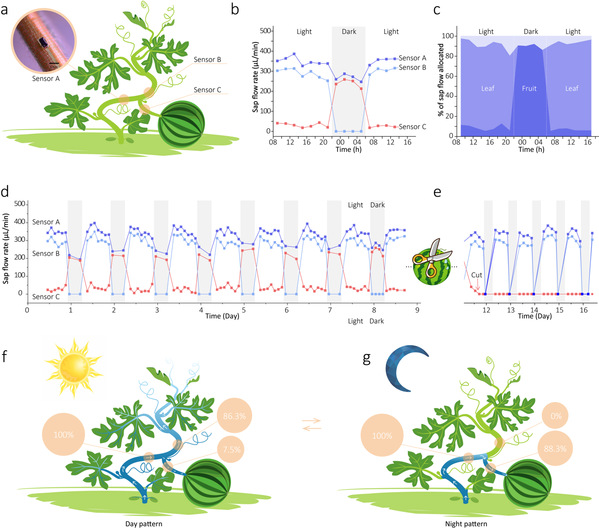Wearable sensing technology is an essential link to future personalized medicine through seamlessly monitoring heart rate, body temperature, and physical activities of human body. Recently, a wearable electronic sensor for plants has been jointly developed by LIU Xiangjiang and YING Yibin from the College of Biosystems Engineering and Food Science, WANG Xiaozhi from the College of Information Science and Electronic Engineering and HU Zhongyuan from the College of Agriculture and Biotechnology.

Researchers pioneered in continuously monitoring the stem flow inside a plant through this wearable electronic sensing device which can harmlessly cohabitate with the plant. Meanwhile, they found that fruit growth and photosynthesis are not synchronized, which not only alters people's long-standing perception of the plant's growth and development process but also opens the door to new technologies in high-yield crop breeding and cultivation.
This study was published in the March 9 issue of the journal Advanced Science.
Plant-wearable sensor capable of continuously monitoring the stem flow
Blood is universally acknowledged as a crucial substance to maintain life and it can transport nutrients needed to a variety of tissues and organs.
Plants also have a similar substance called stem flow. It is the rising fluid flow in the stalk of plants under internal and external pressures such as transpiration and osmotic potential. It is also the carrier of water, nutrients and signal molecules. Therefore, continuous real-time monitoring of stem flow enables researchers to resolve the mysteries of water and nutrient distribution, signaling, and responses to the environment.
However, the detection of stem flow depends primarily on invasive probe sensors, which not only cause physical damage to plants but also circumscribe their application to herbaceous plants due to their large size. Thus, for a relatively long period, there has been no ideal way to monitor stem flow continuously.

The interstice design of the serpentine traces to achieve gases/light‐permeable and waterproof properties for the sensor
To tackle this problem, the Intelligent Bio-industrial Equipment Innovation Team (IBE), the Institute of Smart Sensor and Micro/Nano Systems (ISSMNS), and the Vegetable Germplasm Innovation and Molecular Breeding Team carried out inter-disciplinary research and developed a plant-wearable sensor based on the idiosyncratic physiological traits of plant stems and a wide range of recent advances in materials, micromechanics and nanofabrication.
This sensor is ultrathin, soft, stretchable, and lightweight. Therefore, it can comfortably attach to various plant surfaces (e.g., leaves and stems) for monitoring of stem flow.
Another challenge is to avoid the impact of the sensor on the physiology of the plant. Researchers designed the sensor in a special way so that sunlight, oxygen, water and carbon dioxide, which are required for the normal growth and development of the plant, can pass through it freely, thus achieving long-term harmony between the sensor and the plant and eventually fulfilling the purpose of monitoring stem flow continuously.

Biocompatibility of the plant‐wearable sensor
"This study provides a new paradigm for developing plant-wearable sensors in the future," said WANG Xiaozhi, "It opens the door to research into how to design and fabricate wearable sensors on the strength of specific surface structures and physiological traits or how to evaluate the impact of sensors on plant growth and physiology."
New discovery altering the traditional understanding of the watermelon growth
A craftsman who wishes to do his work well must first sharpen his tools. With such a fantastic detection "sensor", researchers started to do a series of related work.
Researchers installed sensors at several key sites on the stem of watermelon and observed the continuous and dynamic distribution of water in different organs, such as leaves, fruits and stalks, without any damage. By analyzing stem flow data, they discovered for the first time the asynchrony between fruit growth and photosynthesis.
Watermelon is primarily composed of water (roughly 95%). However, according to data from stem flow sensors, only a small amount of water (5%) is transported to the fruit for growth at daytime, while virtually all water is transported to the fruit at nighttime.

In situ monitor of the water allocation inside watermelon plant
"The surge in nighttime stem flow is largely attributed to the difference in osmotic potential due to the photosynthetic products accumulated at daytime. Meanwhile, the absence of transpiration prompts a large quantity of stem flow to the fruit, thereby triggering the increase of the fruit in weight and volume," HU Zhongyong remarked.
These findings imply that the accumulation of fruit fresh weight mainly happens during the night, which is contradicted with the common view that the fruit growth rate should be synchronized with the photosynthesis activities, in other words, higher during the daytime.
Not only is this counter-intuitive discovery of considerable scientific value, but it also holds immense application prospects. "Water is a precious agricultural resource. Analysis of water transport and drought-resistance mechanisms in such drought-resistant crops as watermelon based on stem flow will provide new theoretical and technical support for agricultural production, irrigation and crop breeding in arid regions around the world," said ZJU researchers.






